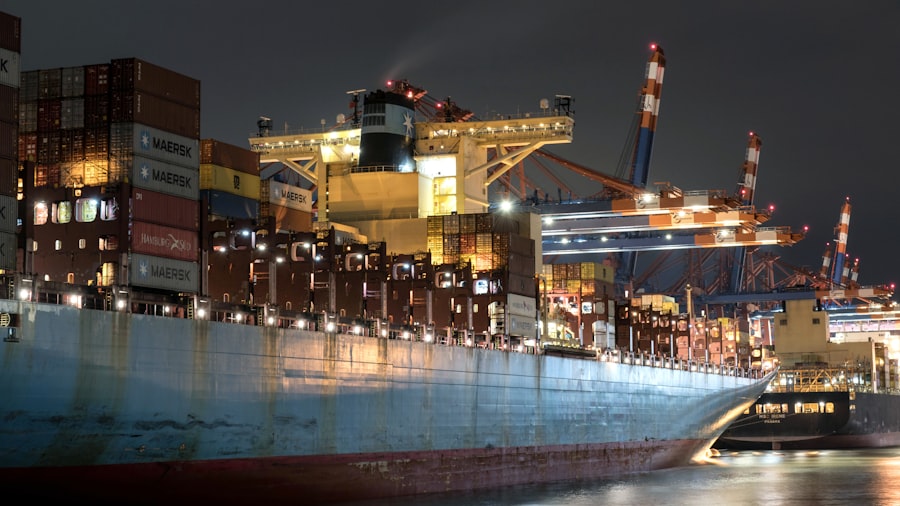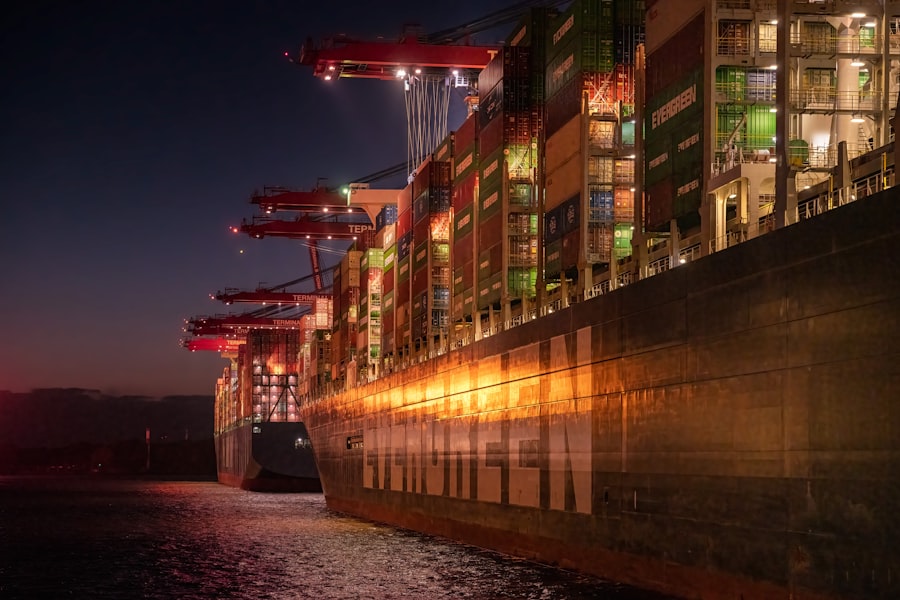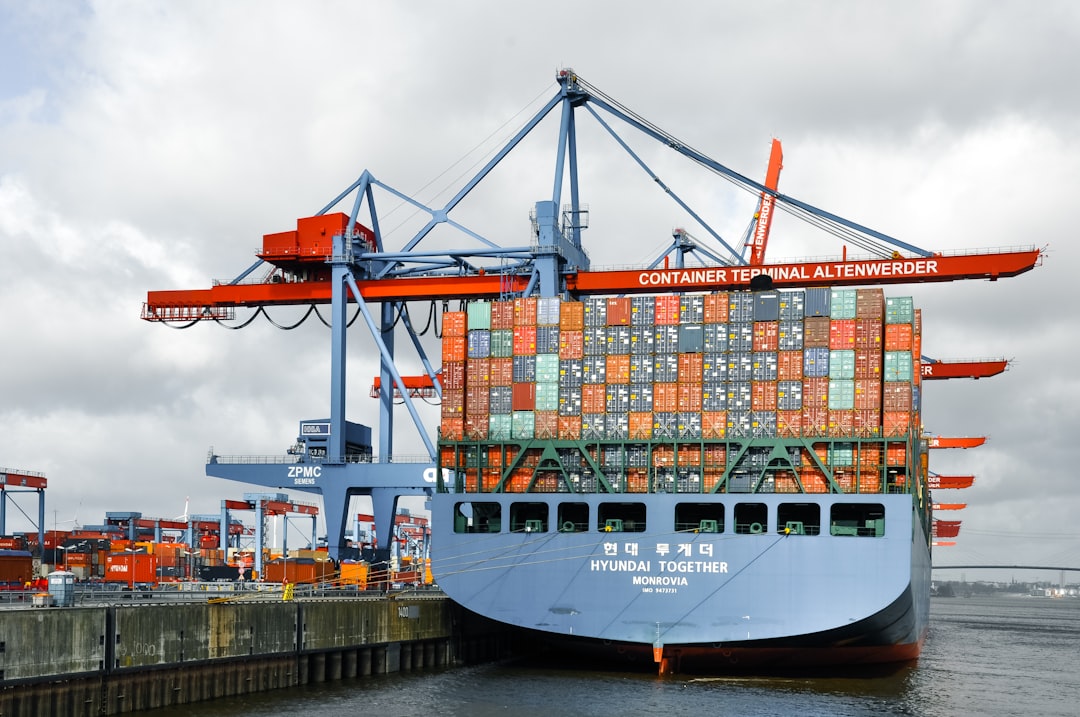As the world approaches 2025, the shipping industry stands at a pivotal crossroads, shaped by a confluence of economic, technological, and environmental factors. The global shipping sector, which serves as the backbone of international trade, is undergoing significant transformations that promise to redefine its operational landscape. With the increasing complexity of global supply chains and the rising demand for efficient logistics solutions, stakeholders in the shipping industry must navigate a myriad of challenges and opportunities.
This article aims to provide a comprehensive outlook on the shipping industry as it heads into 2025, examining key trends and developments that will shape its future. The shipping industry is not merely a facilitator of goods movement; it is a dynamic ecosystem influenced by various external forces. From economic fluctuations to technological advancements, each element plays a crucial role in determining the industry’s trajectory.
As global trade continues to expand, driven by emerging markets and evolving consumer preferences, the shipping sector must adapt to meet these changing demands. This article will delve into the multifaceted aspects of the shipping industry, offering insights into its future direction and the strategies that companies can employ to thrive in this evolving landscape.
Key Takeaways
- The shipping industry is expected to experience significant growth and transformation by 2025, driven by global economic trends, technological advancements, environmental regulations, and emerging markets.
- Global economic trends, such as trade tensions, economic growth, and geopolitical shifts, will have a direct impact on the shipping industry, influencing demand, trade routes, and market dynamics.
- Technological advancements and innovations, including digitalization, automation, and blockchain, are revolutionizing the shipping industry, improving efficiency, transparency, and sustainability.
- Environmental regulations and sustainability initiatives are driving the adoption of cleaner fuels, eco-friendly technologies, and carbon reduction strategies in the shipping industry, shaping the future of maritime operations.
- Emerging markets and trade routes, particularly in Asia and Africa, are becoming key drivers of growth and investment opportunities for shipping companies, leading to new trade patterns and logistical challenges.
Global Economic Trends and Their Impact on the Shipping Industry
The global economy is in a state of flux, with various trends shaping the landscape of international trade and shipping. One of the most significant factors influencing the shipping industry is the ongoing recovery from the economic disruptions caused by the COVID-19 pandemic. As countries emerge from lockdowns and restrictions, there is a renewed demand for goods and services, leading to increased shipping volumes.
However, this recovery is uneven across regions, with some economies rebounding faster than others. The shipping industry must remain agile to respond to these disparities in demand. Additionally, inflationary pressures and supply chain bottlenecks have emerged as critical challenges for the shipping sector.
Rising fuel prices and increased operational costs are squeezing profit margins for shipping companies. Furthermore, disruptions in supply chains have led to delays and increased transit times, prompting companies to rethink their logistics strategies. The ability to adapt to these economic realities will be paramount for shipping companies as they navigate the complexities of global trade in 2025.
Technological Advancements and Innovations in the Shipping Industry

Technological advancements are revolutionizing the shipping industry, offering new solutions to enhance efficiency and reduce costs. The adoption of digital technologies such as blockchain, artificial intelligence (AI), and the Internet of Things (IoT) is transforming traditional shipping practices. Blockchain technology, for instance, provides a secure and transparent way to track shipments, reducing fraud and improving accountability throughout the supply chain.
As more companies embrace these innovations, they can streamline operations and enhance customer satisfaction.
From autonomous vessels to automated port operations, technology is enabling faster and more efficient cargo handling.
These advancements not only reduce labor costs but also minimize human error, leading to safer and more reliable shipping processes. As the industry moves toward 2025, companies that invest in technological innovations will likely gain a competitive edge in an increasingly crowded marketplace.
Environmental Regulations and Sustainability Initiatives in Shipping
| Initiative | Description | Impact |
|---|---|---|
| Sulphur Emission Control Areas (SECA) | Designated areas with strict limits on sulphur emissions from ships. | Reduction of sulphur oxide emissions, leading to improved air quality. |
| Ballast Water Management Convention | Regulation to prevent the spread of harmful aquatic organisms in ballast water. | Protection of marine ecosystems and biodiversity. |
| Energy Efficiency Design Index (EEDI) | Standard for new ships to improve energy efficiency and reduce greenhouse gas emissions. | Lower fuel consumption and carbon footprint of the shipping industry. |
| Ship Recycling Regulations | Guidelines for safe and environmentally sound recycling of ships. | Minimization of environmental and health risks associated with ship dismantling. |
As concerns about climate change intensify, environmental regulations are becoming a focal point for the shipping industry. Governments and international organizations are implementing stricter emissions standards and sustainability initiatives aimed at reducing the carbon footprint of maritime operations. The International Maritime Organization (IMO) has set ambitious targets for reducing greenhouse gas emissions from ships, prompting companies to explore alternative fuels and energy-efficient technologies.
In response to these regulatory pressures, many shipping companies are adopting sustainability initiatives that go beyond compliance. This includes investing in cleaner technologies such as LNG-powered vessels and exploring renewable energy sources like wind and solar power for auxiliary operations. By prioritizing sustainability, shipping companies not only contribute to environmental preservation but also enhance their brand reputation among environmentally conscious consumers.
Emerging Markets and Trade Routes in the Shipping Industry
The landscape of global trade is shifting as emerging markets gain prominence on the world stage. Countries in Asia, Africa, and Latin America are experiencing rapid economic growth, leading to increased demand for imported goods. This trend presents significant opportunities for shipping companies looking to expand their operations into new markets.
As these regions develop their infrastructure and logistics capabilities, they will become increasingly important players in international trade. Additionally, new trade routes are emerging as geopolitical dynamics evolve. The Belt and Road Initiative (BRI), spearheaded by China, aims to enhance connectivity between Asia, Europe, and Africa through infrastructure investments.
By strategically positioning themselves in emerging markets and adapting to changing trade routes, shipping companies can capitalize on growth opportunities in 2025.
Challenges and Opportunities for Shipping Companies in 2025

While the shipping industry is poised for growth in 2025, it also faces a myriad of challenges that could hinder progress. One of the most pressing issues is the ongoing labor shortage within the maritime sector. As experienced professionals retire and fewer young people enter the industry, companies may struggle to find qualified personnel to operate vessels and manage logistics operations.
Addressing this talent gap will be crucial for maintaining operational efficiency. On the other hand, challenges often present opportunities for innovation and growth. Companies that embrace digital transformation can streamline their operations and improve decision-making processes through data analytics.
Furthermore, those that prioritize sustainability can differentiate themselves in a competitive market by appealing to environmentally conscious consumers. By proactively addressing challenges while leveraging opportunities, shipping companies can position themselves for success in 2025.
The Role of Digitalization and Automation in the Future of Shipping
Digitalization is reshaping every facet of the shipping industry, from cargo tracking to fleet management. The integration of digital tools allows companies to optimize their operations by providing real-time visibility into supply chain processes. This transparency enables better decision-making and enhances collaboration among stakeholders.
As digital platforms become more sophisticated, they will play an increasingly vital role in driving efficiency within the industry. Automation is another key component of this digital transformation. Automated systems can handle repetitive tasks such as cargo loading and unloading, reducing labor costs while increasing speed and accuracy.
Furthermore, autonomous vessels are on the horizon, promising to revolutionize maritime transport by minimizing human intervention. As these technologies continue to evolve, they will redefine operational standards within the shipping industry.
Supply Chain Resilience and Risk Management in the Shipping Industry
The COVID-19 pandemic exposed vulnerabilities within global supply chains, highlighting the need for resilience and effective risk management strategies in the shipping industry. Companies must develop contingency plans to address potential disruptions caused by unforeseen events such as natural disasters or geopolitical tensions. Building resilient supply chains involves diversifying suppliers, enhancing inventory management practices, and investing in technology that provides real-time insights into potential risks.
Moreover, fostering strong relationships with partners across the supply chain can enhance resilience by enabling collaborative problem-solving during crises. By prioritizing risk management and resilience-building initiatives, shipping companies can better navigate uncertainties while ensuring continuity of operations in 2025.
The Impact of Geopolitical Shifts on the Shipping Industry
Geopolitical shifts have far-reaching implications for the shipping industry, influencing trade routes, tariffs, and regulatory frameworks. Tensions between major powers can disrupt established trade patterns and create uncertainty for shipping companies operating in affected regions. For instance, ongoing trade disputes may lead to increased tariffs on certain goods, prompting companies to reevaluate their logistics strategies.
Additionally, geopolitical developments can open new markets or close off existing ones. Shipping companies must remain vigilant in monitoring global political dynamics to anticipate changes that could impact their operations. By staying informed about geopolitical trends and adapting their strategies accordingly, companies can mitigate risks while seizing new opportunities in an ever-changing landscape.
Future Talent and Workforce Trends in the Shipping Industry
As the shipping industry evolves, so too does its workforce landscape. The demand for skilled professionals is expected to grow as companies embrace digitalization and automation technologies. However, attracting young talent remains a challenge due to perceptions of an outdated industry image.
To address this issue, shipping companies must actively promote career opportunities within the sector while highlighting its innovative aspects. Furthermore, ongoing training and development programs will be essential for equipping employees with the skills needed to thrive in a technology-driven environment. By investing in workforce development initiatives and fostering a culture of continuous learning, shipping companies can build a skilled workforce capable of navigating future challenges.
Strategies for Success in the Evolving Shipping Industry
In conclusion, the outlook for the shipping industry in 2025 is characterized by both challenges and opportunities driven by economic trends, technological advancements, environmental regulations, and geopolitical shifts. To succeed in this evolving landscape, shipping companies must adopt proactive strategies that prioritize innovation, sustainability, and resilience. By embracing digitalization and automation technologies, companies can enhance operational efficiency while reducing costs.
Additionally, investing in workforce development will ensure that organizations have access to skilled professionals capable of navigating future complexities. Ultimately, those who remain adaptable and forward-thinking will be best positioned to thrive in an increasingly competitive global marketplace as they chart their course toward success in 2025 and beyond.
In the context of the Shipping Industry Outlook 2025, it’s essential to consider the broader implications of technological advancements and environmental regulations on global trade. A related article that delves into these aspects can be found on MyGeoQuest. This article provides insights into how emerging technologies and sustainability practices are reshaping the shipping industry, offering a comprehensive view of future trends and challenges. For more detailed information, you can read the full article by visiting MyGeoQuest.
WATCH NOW! Unlocking Disaster: 7 Choke Points That Could Fracture Our Connected World Overnight
FAQs
What is the current state of the shipping industry?
The shipping industry is currently facing challenges such as overcapacity, fluctuating fuel prices, and increasing environmental regulations. However, it is also experiencing technological advancements and digitalization to improve efficiency and sustainability.
What are the key trends shaping the shipping industry outlook for 2025?
Key trends shaping the shipping industry outlook for 2025 include the adoption of alternative fuels, increased use of automation and digitalization, and a focus on sustainability and environmental regulations.
How is the shipping industry addressing environmental concerns?
The shipping industry is addressing environmental concerns by investing in alternative fuels such as LNG and hydrogen, implementing energy-efficient technologies, and adhering to stricter environmental regulations set by international organizations.
What role does digitalization play in the future of the shipping industry?
Digitalization plays a crucial role in the future of the shipping industry by enabling improved efficiency, transparency, and decision-making through technologies such as blockchain, IoT, and data analytics.
How is the shipping industry adapting to changing consumer demands?
The shipping industry is adapting to changing consumer demands by offering more sustainable and transparent supply chain solutions, implementing e-commerce logistics strategies, and enhancing last-mile delivery capabilities.
